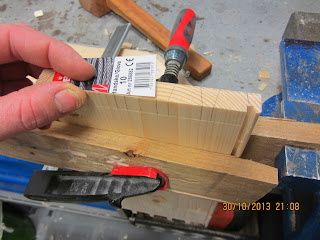The current wind speed is between 18-20 m/s which is equivalent of 40-45 mph
I guess the height of the waves to be about 3-4 metres, but I am not used to making qualified guesses on the wave height, so they could be bigger.
We are going pretty straight into the waves at this point, so there isn't much rolling/listing at the moment. If we had the waves coming from the side it would be a completely different story.
So actually in this weather with the present course woodworking is possible.
Taking pictures of waves isn't easy. You don't really get an idea of the size because there isn't anything that gives a comparable size. Our type of ship has got the accomodation forward, so that is why most of the pictures are facing aft or ove the side.
The ship I am on is a PSV = Platform Supply Vessel.
It is kind of short haul trucking at sea. We supply the platform with e.g. fuel, fresh water, food containers, spare parts and drill mud, drill equipment etc. We also move stuff from the platforms e.g. waste and equipment which is not needed anymore.
The overall length of the ship is 85 m (278') the breadth is 20 m (65'), so it isn't a very large ship. It is very maneuverable though. We have two froward tunnel thrusters and 1 retractable azimuth thruster fwd. At the aft we have two azimuth thrusters (the main propuslsion).
The ship can be seen here: Troms Artemis
Waves and some spray
Some of our deck cargo: Containers and pipes
More waves
View aft, the deck cargo is secured.
The workshop facing aft.
The workshop facing fwd.


















































